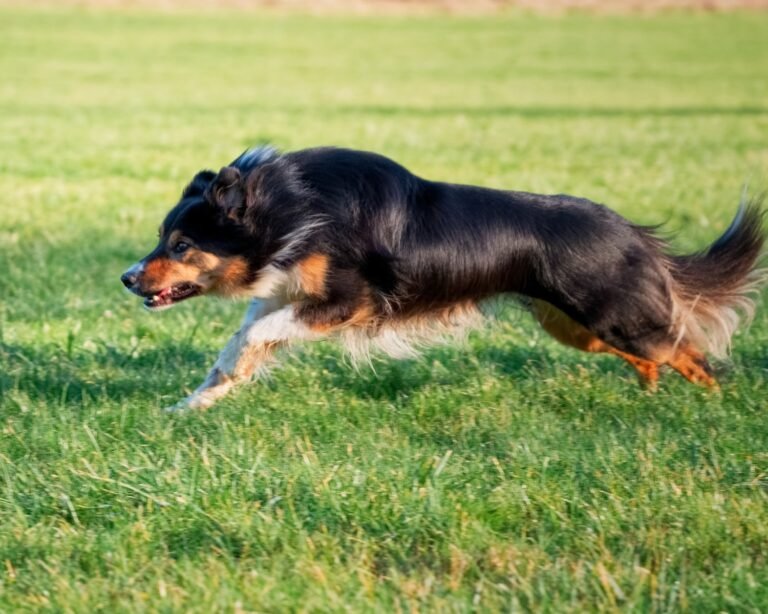Do Border Collies Get Along With Cats? Easy 7 Steps to a Peaceful Multi-Species Home
Do Border Collies Get Along With Cats? Easy 7 Steps to a Peaceful Multi-Species Home
Do border collies get along with cats? That question of whether Border Collies can successfully live alongside feline friends is a common one. This energetic, driven breed has strong herding instincts that can create initial challenges in learning to coexist with cats. However, with proper training and management, Border Collies and cats can absolutely learn to get along and thrive together.
Follow this comprehensive guide covering tips to successfully integrate Border Collies and cats including proper introductions, training methods, supervision, optimal environments, and what to expect. With dedication to a peaceful multi-species home, you can help even predatory Border Collies and skittish cats become harmonious household companions.
Do Border Collies Get Along With Cats? Understanding the Border Collie’s Strong Prey Drive
At their historical roots, Border Collies were bred specifically for their intense drive, athleticism, and keen ability to control herds of sheep while preventing predators like wolves from attacking their flock. Their survival depended on exhibiting swift reactivity toward anything running from them.
When those herding instincts are triggered, even beloved family cats can suddenly transform into “prey” items in the Border Collie’s mind. Small running animals activate their chase response. This makes initial introductions with cats delicate, requiring planning and patience. With effort, that instinct can be redirected into safe, controlled behaviors.
Untrained Border Collies may intensely stalk, herd, or even harm cats they view as potential prey. Their eyes will fixate, ears point forward, and they may freeze in a pre-attack “eye” stance. Allowing chasing leads to tragedy. Proper training and management are essential around cats. But with care, they can adapt.
Step 1: Start Socialization Early
Early puppyhood presents a prime opportunity to get Border Collies comfortable with cats before chase drives fully mature. Do border collies get along with cats? Positively introduce kittens and calm adult cats starting at 7-8 weeks if possible so they imprint on cats as friends vs prey.
Use food rewards and praise to encourage polite investigation on leash. Let them become accustomed to cat sounds and scents. Building a neutral foundation prevents ingrained reactivity. Avoid overwhelming puppies – take introductions slow. The goal is acclimation, not tension or fixation. Be sure kitties have escape routes.
Do border collies get along with cats? While late socialization can still work, early prevention ensures the best results with minimal chasing tendencies to undo. The ideal window is when Border Collies are open to new experiences between 7-16 weeks of age.
Step 2: Provide Separate Safe Zones
When first integrating, allow cats and dogs to interact safely with physical barriers like pet gates and crates. This protects cats while allowing the dog to observe without obsession or contact. Rotate who receives free roam time.
Uplift cat highways like shelves mounted on walls and tall cat trees to create vertical spaces just for felines. Outdoor cattery options add further retreat space. Ensure cats always have their own quiet zone they can access behind a barrier. This prevents intimidation, blocking, or staring sessions.
Do border collies get along with cats? Well they will with proper management prevents dangerous chasing. Only allow contact after the Border Collie reliably ignores and avoids pressuring the cat. Taking it slow builds a peaceful coexistence over time.
Step 3: Use a Drag Leash for Training
Keep young or highly energetic Border Collies on a light 15 foot drag leash anytime cats are present. This allows interrupting obsession or stalking immediately with a quick tug and command like “leave it!”. Reward ignoring kitties.
The leash provides critical management while you work on obedience commands like “look”, “leave it” and “place” to distract from fixation. Use the leash drag to gently guide their head away from staring at the cat. Relaxed calmness around cats leads to freedom off-leash.
Trailing a long line keeps your dog in check but allows you hands-free monitoring. Quickly correct any inappropriate interest before arousal escalates. But take care not to let cats or dogs play with and accidentally tangle in the line.
Step 4: Do border collies get along with cats? If you Provide Alternate Outlets for Energy
Prevent fixation on cats by ensuring your Border Collie is thoroughly exercised daily. A tired dog is less apt to seek mischief and chasing. Structured aerobic activity drains energy in a positive way.
Incorporate mental stimulation like training classes, trick work, food puzzles and chew toys as well. A brain drained through obedience and problem solving cannot obsess on cats. Schedule playtime and walks before interactions so they enter calmer.
Meet their demanding exercise quotas, then enforce relaxation through mutual massage, stuffed Kongs, or music during cat socialization. A fulfilled dog accepts cats quicker than a bored, under-exercised one. Prevent destructive energy.
Step 5: Use Positive Reinforcement and Redirection
Train focus on you, not the cat! Use high-value food rewards and praise to reinforce ignoring kitties and eye contact with you instead. Mark and treat any brief look aways from the cat.
If your Border Collie fixates or stalks, immediately redirect their attention to a cue like “sit” or “find it”. Tossing a ball refocuses them. Defuse tension fast through diversion, not punishment. Set them up for success by interrupting undesirable reactions before they escalate.
Applied behavior modification strengthens wanted behaviors like lying down calmly near cats. Avoid scolding – it can worsen excitement. Slowly shape their behavior through positive reinforcement. Patience is vital.
Step 6: Provide Mental Stimulation
Incorporate activities requiring concentration like obedience drills, tricks and nosework. After a training session they’ll be less apt to refocus on cats. Schedule training just before they are loose together.
Work their minds before co-mingling. Mentally worn out Border Collies have less mental space left to fixate on cats. Combine training with sufficient physical exercise to produce the ideal mellow state conducive to bonding with kitty housemates. A tired dog is a cooperative dog.
Step 7: Consider Medications If Needed
For obsessively fixated dogs, anti-anxiety or impulse control medication can take the edge off while behavior modification training progresses. Prozac, gabapentin, clonidine and clomipramine help increase calmness and focus.
Medication allows you to implement desensitization and counterconditioning without the risk of alert states and chasing. As training takes effect, drugs can often be reduced. Work closely with your veterinary behaviorist to find the right prescription if needed.
Do border collies get along with cats? While not a sole solution, drugs make training easier by optimizing their mental state. The goal is reducing arousal around movement and distractions. Medication boosts training success.
Step 8: Allow Positive Interactions
Do border collies get along with cats? After your Border Collie reliably ignores and avoids cats at a distance, begin allowing safe, structured interaction on leash or using baby gates. Offer high-value treats only for polite, gentle behavior around the cat.
Work up to closer proximity and finally cautious brief sniffs and meets with the leash on and treats flowing. Any fixation earns immediate removal from the situation. Build a foundation of positive associations with cats at their own pace.
Rushing interactions risks trauma on either side. Introduce novelty like toys or catnip gradually. Avoid forced interactions – voluntary approach helps them bond. Go back a step if arousal rises. Prevent obsession before it starts.
Step 9: Practice Obedience Commands Around Cats
Do border collies get along with cats? Once your Border Collie remains relaxed and neutral around cats from a slight distance, start integrating known cues into co-training sessions. Use their default focus on you to strengthen bonds in the cat’s presence.
Cycle between self-control commands like “place”, “focus” and “leave it” and fun tricks to keep energy upbeat. Frequently reinforce checking in with you, not the cat. Use their love of working together to continue building positive associations.
Integrating obedience prevents fixating on the cat. Do border collies get along with cats? Your Border Collie will learn following your direction around a potential distraction brings great things! Blend training into all interactions to solidify good habits.
Step 10: Allow Free Time After Mastering Structure
After your Border Collie follows commands reliably around the cat on-leash without fixation, begin allowing limited supervised off-leash time. Watch carefully for any stalking or obsession. Offer a food puzzle to keep them engaged.
If they remain relaxed and aloof to kitty activity in the room over multiple sessions, incrementally increase unrestricted co-mingling time. But separate cervixes initially so that either species can retreat if overwhelmed.
Always separate when alone unsupervised until you’re certain of reliable amicability. Heavy supervision is key – don’t risk chasing or trauma. Slow immersion is the path to success. With time, peaceful coexistence can be achieved.
FAQ’s – Frequently Asked Questions That Answer The Question “Do border collies get along with cats?”
Determining the best methods for integrating an intense breed like the Border Collie with cats requires insight into their unique temperament. Here are answers to some common questions:
How can I stop my Border Collie from chasing my cat?
- Use leash corrections and obedience commands like “leave it” to interrupt stalking or chasing immediately, then redirect to a positive task and heavily praise ignoring the cat. Avoid letting the chase happen in the first place by proper management.
Are Border Collies aggressive towards cats?
- Border Collies should never show human-directed aggression. However, their high prey drive can initially cause them to view cats as “prey” objects and stalk or harm them without proper training. Early socialization and impulse control training helps prevent aggression towards cats triggered by their chase instincts.
At what age are Border Collies less likely to chase cats?
- Proper training, not age, determines how safely a Border Collie interacts with cats. However, starting socialization and obedience foundations in early puppyhood from 8-16 weeks old has the best likelihood of accepting cats as companions rather than prey as adult behaviors solidify.
How can I introduce a Border Collie puppy to my cat?
- Start introductions very slowly, keeping puppy leashed and allowing cats safe exits. Use baby gates and crates to allow smelling and observation from a distance. Offer high-value treats to pup for calm, polite behavior around cats. Avoid direct contact until the puppy reliably ignores your cat. Take introductions gradually.
Can a Border Collie kill a cat?
- An untrained Border Collie that views a cat as prey is absolutely capable of inflicting harm through shaking, biting, or worse. All interactions should be heavily supervised. Dogs with high prey drive must learn impulse control. Proper training, management, and immediate intervention if issues arise reduces risk dramatically.
How do I get my Border Collie to stop herding my cats?
- Use leash corrections and training commands like “leave it” to disrupt any stalking, circling, staring, or tail nipping directed at cats. Redirect your Border Collie to a positive task and reward ignoring kitties. Solid obedience foundations and plenty of mental and physical exercise helps curb obsessiveness.
Will my adult Border Collie learn to accept a new kitten?
- Adult Border Collies can be more challenging to train to coexist with cats. However, the same gradual positive conditioning methods can work over time. Use control via leashes and gates for very slow introductions, and heavily reinforce pup for polite, gentle behavior as you slowly build up supervised interaction between your adult dog and kitten.
Can Border Collies sense cats are family members?
- Through slow, positively reinforced exposure and training, Border Collies can come to view household cats as fellow cooperative family members rather than “prey” quarry. But the strong chase instincts bred into the breed means this happy coexistence requires time, training consistency, and structured management.
Do border collies get along with cats? The Takeaway: Peaceful Coexistence Takes Patience
While challenging due to high prey drive, Border Collies and cats absolutely can learn to peacefully and safely coexist through proper introductions, training, and structured management. Tapping into their intelligence helps Border Collies view cats as friends rather than pursuit objects.
With a commitment to constant supervision, humane training methods, plenty of exercise, and slow acclimation, even predatory Border Collies can become trustworthy around even dainty kitties. Pay attention to body language, go at their pace, provide secure retreats, use control tools, and reward only calmness.
If you invest the time and dedication required, even a high energy Border Collie and a skittish feline can eventually relax in each other’s company. Consistency and patience are key. With wisdom and work, harmonious multi-species homes are entirely possible!









